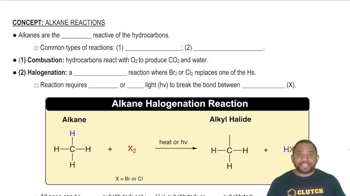Here are the essential concepts you must grasp in order to answer the question correctly.
Balancing Chemical Equations
Balancing chemical equations involves ensuring that the number of atoms for each element is the same on both sides of the equation. This is based on the law of conservation of mass, which states that matter cannot be created or destroyed in a chemical reaction. To balance an equation, coefficients are adjusted in front of the chemical formulas, rather than changing the subscripts within the formulas.
Recommended video:
Balancing Chemical Equations
Stoichiometry
Stoichiometry is the quantitative relationship between reactants and products in a chemical reaction. It allows chemists to predict the amounts of substances consumed and produced in a given reaction. Understanding stoichiometry is essential for balancing equations, as it provides the ratios needed to ensure that the equation reflects the conservation of mass.
Recommended video:
Types of Chemical Reactions
Chemical reactions can be classified into several types, including synthesis, decomposition, single replacement, and double replacement. The reaction between tungsten hexachloride and bismuth is a synthesis reaction, where two or more reactants combine to form a single product. Recognizing the type of reaction helps in predicting the products and understanding the underlying mechanisms involved.
Recommended video:
Common Types of Alkane Reactions




